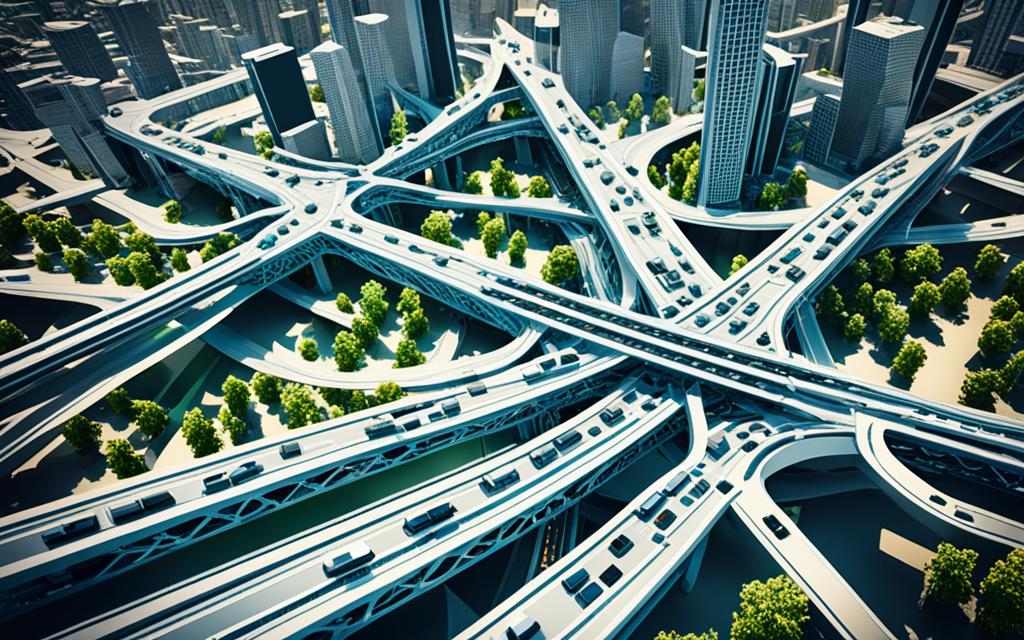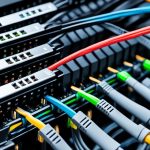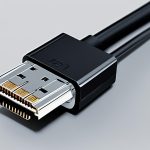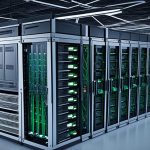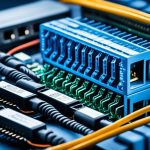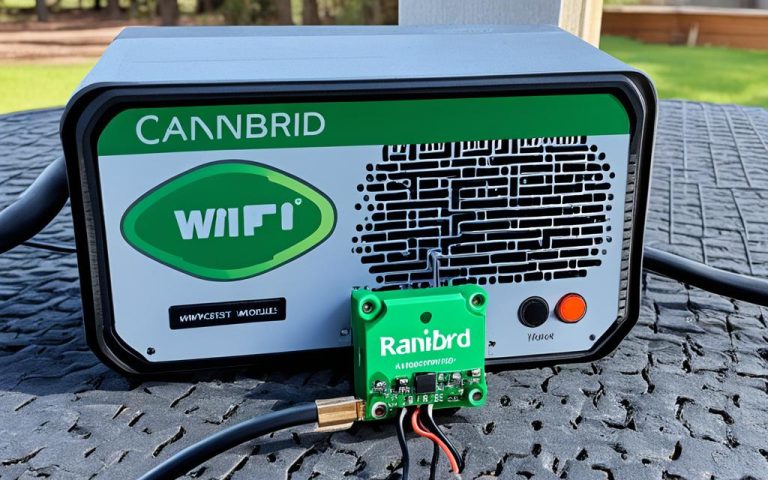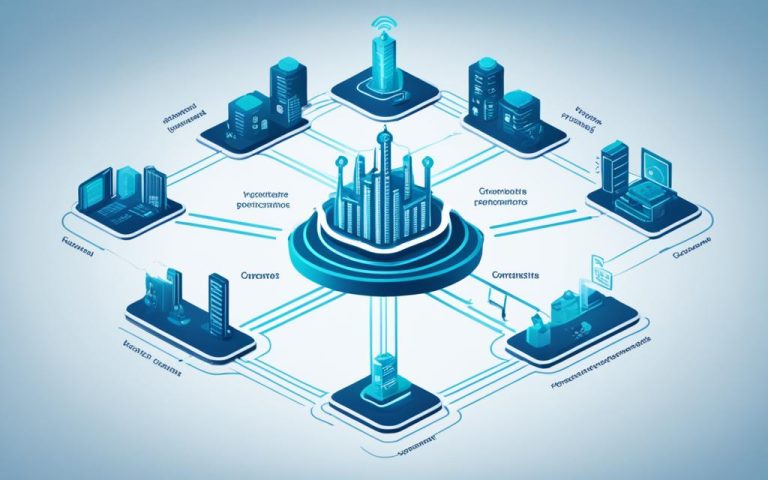A large computer network covers a city and connects many devices for sharing information and resources. These networks, called Metropolitan Area Networks (MANs), cover big areas and help many users stay connected. They are key for communication and moving data between places.
Key Takeaways:
- MANs are made to reach over a big area, connect many users, and support different apps1.
- They offer much faster speeds than Wide Area Networks (WANs), from 1 gigabit per second to 100 Gbps1.
- MANs have backup connections for reliability and need at least two links per building1.
- Examples include Cisco Systems in San Jose, CERN in Geneva, and New York City’s free Wi-Fi1.
- The National Smart Cities Mission in India uses MAN to improve communication between the government, citizens, and public services1.
Exploring Different Types of Computer Networks
Computer networks are key in linking devices and making sure they can talk to each other and share resources. There are many kinds of computer networks, each made for a certain area size and for different needs. Let’s look at the main types of computer networks:
-
Local Area Network (LAN)
A Local Area Network is a small network that helps connect devices in places like homes, offices, or schools. It’s known for fast data transfer and few errors. This makes it perfect for linking computers in offices to share things and talk to each other2.
-
Metropolitan Area Network (MAN)
A Metropolitan Area Network covers big areas like cities or large campuses. It’s used by local governments and companies to link offices in a city and share stuff. MANs let different LANs in a city talk fast and share resources2.
-
Wide Area Network (WAN)
A Wide Area Network covers huge areas, like cities, countries, or the whole world. The internet is a big WAN that links many LANs together. This lets people share resources and talk over long distances. WANs are vital for global businesses3.
Each network type has its own special features and benefits, fitting different needs and sizes. Whether it’s a LAN, MAN, or WAN, computer networks have changed how we connect and share info. They make communication fast and efficient, boosting productivity and resource use.
Personal Area Network (PAN): Definition and Advantages
A Personal Area Network (PAN) connects personal devices over a short distance, usually up to 10 meters. It uses wireless tech like Bluetooth or USB for communication between devices.
PANs have many benefits for connecting personal devices. They provide a stable connection within a small area, ensuring smooth data sharing. This means no interruptions or lost signals4.
PANs are also cost-effective. They don’t need extra wiring, which saves money on setup. This makes them a budget-friendly way to network personal devices4.
Security in a PAN depends on the devices’ security settings. With the right security, PANs keep data safe from unauthorized access. This protects sensitive info4.
PANs offer a simple, wireless way to connect devices. They’re quick to set up, save energy, and keep data safe. Their small range and low cost make them perfect for linking smartphones, tablets, laptops, and more in close spaces4.
| Data Transmission Speed | Wireless Connectivity | Security |
|---|---|---|
| Up to 10 meters | Bluetooth, USB | Depends on device security |
“PANs make it easy and efficient to connect personal devices. They offer wireless connections and are affordable. This makes them great for linking smartphones, tablets, and laptops.”
Understanding Local Area Networks (LANs)
A Local Area Network (LAN) connects devices in a small area, like an office or home. It’s key for sharing resources and working together in places like schools, businesses, and homes5.
LANs use fast and affordable hardware like switches and Ethernet cables. They can handle a few to thousands of computers and stretch up to 2 kilometers5.
Even though LANs often use wires, they can also be wireless with Wi-Fi. This makes working in a LAN more flexible and convenient5.
LAN technology started in the 1970s with Ethernet. It has grown a lot since then. LANs use Ethernet and Wi-Fi, each with its own benefits like stability and speed5.
LANs are physical, which means they’re fast and reliable. This is different from WANs, which cover bigger areas and connect many LANs. WANs often use the internet for connections6.
Keeping LANs safe is very important. They use strong passwords, encryption, and updates to protect data and networks. Teaching users about security is also key5.
LAN technology is always changing. We’re seeing more IoT devices, better Wi-Fi, stronger security, and SDN. These changes make LANs better and more connected5.
It’s important to know the difference between LANs and WANs. LANs are for local connections, while WANs cover wider areas and link many LANs together. WANs use different types of connections, like leased lines and VPNs7.
LANs are vital for networking and teamwork. As technology gets better, LANs will keep improving. They help people and businesses stay connected in the digital world5.
Metropolitan Area Network (MAN): Features and Applications
A Metropolitan Area Network (MAN) is for customers needing fast internet in a big area. It connects computers in cities, making communication and data sharing easy. MANs sit between Local Area Networks (LANs) and Wide Area Networks (WANs), offering great coverage and speed.
MANs cover areas from 5 to 50 kilometers, linking different places in a city8. This lets businesses and organizations work together smoothly. Unlike WANs, MANs are faster, making data sharing quicker8.
Fiber optic cables are key to MANs9. These cables carry data fast and efficiently. MANs use different network designs like ring, star, and mesh, based on what they need9. Ethernet, a common LAN protocol, helps MANs work well with other networks9.
MANs help many sectors, like businesses, schools, and healthcare9. They connect LANs, making it easier for people to work together. This makes them vital in cities for many activities9.
Benefits of Metropolitan Area Networks:
MANs bring many benefits to cities. Some key advantages are:
- They make internet access fast and reliable, helping people and businesses work better together.
- They let different LANs share resources, making things more efficient.
- They support important services like healthcare and education, making them run smoothly.
- They help cities become smarter by supporting smart technologies and IoT.
- They give fast internet to places like hotels and sports venues, improving experiences.
Comparing MANs and WANs:
MANs and WANs are both big networks, but they’re different:
- MANs cover up to 50 kilometers, while WANs stretch over huge distances8.
- MANs are faster because they’re smaller, making data sharing quicker8.
- Setting up a MAN is cheaper than a WAN, making it a good choice for cities8.
- MANs have less delay and errors, making them more reliable8.
- They support moderate bandwidth, which is good for city needs8.
- MANs are more resilient against network failures, showing they’re strong8.
- They face less congestion, making them more efficient8.
| Features | Metropolitan Area Network (MAN) | Wide Area Network (WAN) |
|---|---|---|
| Coverage | 5-50 kilometers within a metropolitan area | Extends over hundreds or thousands of kilometers |
| Transmission Speeds | Higher speeds within the metropolitan area | Lower speeds due to covering larger distances |
| Cost | Moderate installation cost | Expensive due to specialized equipment and maintenance |
| Propagation Delays | Moderate delays | Longer delays over extended distances |
| Noise and Error Occurrence | Less noise and error occurrence | More susceptible to noise and errors |
| Bandwidth | Moderate bandwidth | Lower range of bandwidth |
| Fault Tolerance | Higher fault tolerance | Lower fault tolerance |
| Congestion | Less prone to congestion | More prone to congestion |
Wide Area Network (WAN): Characteristics and Advantages
A Wide Area Network (WAN) connects many Local Area Networks (LANs) over a large area, often across states or countries10. It’s key for efficient communication and teamwork over long distances. It supports a wide range of applications and services.
WANs are bigger than LANs or Metropolitan Area Networks (MANs), covering vast distances with many servers and terminals10. This means they’re slower than LANs and MANs, with speeds from Kbps to Mbps10. They also have higher delays due to the distance and hops data takes to travel10. But, the benefits of WANs are still greater.
WANs connect remote places, making communication and sharing resources easy10. They give internet access to branch offices, letting employees use cloud apps and databases. This helps organizations work better, be more productive, and team up across distances10.
WANs let employees work from anywhere, accessing important data or joining virtual meetings easily10. This is great for companies with remote or mobile teams.
WANs handle many users and apps at once, ensuring everything runs smoothly10. They have a central setup that manages data, routes it, and balances loads between LANs11. They support things like voice calls, video chats, or sharing files, making teamwork and info sharing seamless10.
But, setting up and keeping a WAN going can be costly and needs special skills11. They’re not as good at handling faults or security as LANs, facing issues like congestion and security risks. To fight these, companies use firewalls, antivirus tools, and VPNs to keep data safe11.
Despite the hurdles, WANs bring huge benefits like wide coverage, better security, and more bandwidth through leased lines11. These perks make WANs essential for linking companies across regions or countries, ensuring smooth communication and leveraging network power11.
Comparing the Advantages and Disadvantages of Different Network Types
Choosing the right computer network is key. You need to look at the good and bad of Local Area Networks (LANs), Metropolitan Area Networks (MANs), and Wide Area Networks (WANs). This will help you pick the best network for your needs.
Local Area Networks (LANs)
LANs are for small networks in a building or campus. They move data fast, from 10 Mbps to 10 Gbps12. They’re great for tasks that need a lot of speed. Setting up and managing LANs is easy, and they’re secure and reliable13.
But, LANs don’t cover much ground and can’t grow too big12. Using them a lot can slow them down13.
Metropolitan Area Networks (MANs)
MANs reach across a city or area. They’re fast, from 1 Mbps to 1 Gbps12. They’re perfect for linking companies and internet providers. But, they cost more to set up and maintain than LANs12. They might not be as secure or reliable as LANs12.
Wide Area Networks (WANs)
WANs span huge areas, like cities, countries, or even the world. They connect far-off places and let you access the internet. WANs can be fast, from 1 Kbps to 100 Gbps12. But, they’re expensive and hard to keep running over long distances. They’re slower than LANs and can have high delays12.
LANs are fast, easy to manage, and secure. MANs are fast over a wider area, great for linking companies. WANs connect far-off places and give you internet access. Each network has its pros and cons. Think about what you need before choosing.
| Network Type | Range | Speed |
|---|---|---|
| LAN | Within a building or campus | 10 Mbps to 10 Gbps |
| MAN | City or metropolitan area | 1 Mbps to 1 Gbps |
| WAN | Across cities, countries, or continents | 1 Kbps to 100 Gbps |
The Role of Backbone Networks in Urban-Scale Networks
Backbone networks are key to keeping urban computer networks running smoothly. They are made up of fast, dedicated connections that link LANs, MANs, and WANs together. These networks are essential for moving data quickly and reliably across the network, keeping communication and information flowing without interruption.
Urban networks count on backbone networks to share data between different parts of the network. They act like the network’s central nervous system. This lets data move fast and supports the communication needs of people and organizations in cities.
Backbone networks are known for their fast and reliable data transfer. They use leased lines for this, giving organizations a secure way to send data quickly. This makes them crucial for dependable communication in cities.
Virtual Private Networks (VPNs) are another way backbone networks keep data safe. They use the internet to send data securely, protecting important information during its journey14.
Backbone networks also use MPLS technology to send data efficiently. This method directs data by labels, making it fast. But, it can be more expensive and needs special skills to set up14.
In urban networks, backbone networks make sure communication and data sharing work well, no matter the distance. They help exchange information, resources, and apps, making work together easier and more efficient.
One big plus of backbone networks is how they can grow with businesses. They can connect sites across cities or countries without costing too much or being too hard to manage14.
They also make managing data easier, letting companies store, manage, and share it well. This helps keep data safe and makes using resources better across the network14.
In summary, backbone networks are vital for urban networks. They make sure data moves fast and reliably, support teamwork, and help businesses grow. With their fast connections and smart tech, they help organizations work well in today’s connected world.
Exploring the Applications of Urban-Scale Computer Networks
Big computer networks cover cities and help many industries and sectors. These networks, known as metropolitan area networks (MANs) or wide area networks (WANs), are key to modern city life. They make sure everyone can connect on a huge scale.
These networks help people and groups talk and work together. They give internet access, letting people connect, share info, and do online stuff. Whether it’s sending emails or joining video calls, they make sure cities stay connected.
Online shopping and services are big users of these networks too. With more people shopping online, these networks are vital for e-commerce. They help businesses handle online sales, manage stock, and give customers a smooth experience.
Urban networks also support smart city projects. They link devices and sensors across the city, letting data flow and improve life. This helps with traffic, air quality, and makes cities better places to live.
These networks are key for city infrastructure too. They help with transport, utilities, and healthcare by moving data and info. For instance, they manage traffic lights, track public transport, and give updates to commuters. They also keep utilities running smoothly and healthcare services online.
Urban networks touch many areas of life, making them vital for city living today. They help with talking, shopping online, smart city projects, and keeping key services running. These networks are the heart of city life and efficiency.
Statistical Data: In 1969, the first four nodes of the ARPANET were connected using 50 kbit/s circuits between the University of California at Los Angeles, the Stanford Research Institute, the University of California at Santa Barbara, and the University of Utah.15
Tracing the Evolution of Urban-Scale Computer Networks
Large computer networks have changed a lot over time. They’ve grown thanks to tech advances, more people needing to connect, and our use of devices. From the early days of packet switching and ARPANET to the internet and wireless tech, these networks have changed how we talk, work together, and find information. Now, with 5G and the Internet of Things (IoT), they’re changing urban networks too.
Computer networks have shaped our cities. As cities get more digital, we see urban-scale networks. These networks link together to make cities run smoothly and improve life for city folks.
Urbanization, growing populations, and the need for better resource use have shaped these networks. Source16 shows how cities in China are changing, moving towards a balanced structure. These networks have a clear structure, with some areas more connected than others.
The “Belt and Road” initiative connects many cities, making trade and cultural exchanges easier. It’s a big project to link Asia, Europe, and Africa. By studying how information moves, we can see the power of these networks.
More people are moving to cities, making them bigger and more complex. 2 says over two-thirds of the world will live in cities by 2050. To make cities better, researchers use Google Street View to study urban quality and change.
They look at things like potholes and graffiti to see how cities are doing. This method shows us how cities decay and where it’s worst. It helps us understand urban inequality and plan better.
Python tools like OSMnx help researchers and planners work with city data. Source17 lets you easily get and work with street network data from OpenStreetMap. With one line of code, you can get different types of networks ready for analysis.
OSMnx also gives you other data like building footprints and places. You can study street networks, figure out travel times, and make diagrams. It makes getting city boundaries easy, helping with planning.
| Urban Quality Metrics at Street Segment Level | Object Classes Indicating Urban Decay |
|---|---|
| Comprehensive index development | Potholes |
| Measurement of urban decay | Graffiti |
| Mapping urban inequality | Garbage |
| Comparing urban decay patterns | Tents |
| Effective urban planning | Barred or broken windows |
| Informed urban development | Discolored or dilapidated façades |
| Granular measurement of urban decay | Weeds |
| Visualization of street networks | Utility markings |
By combining data from different sources, we see how urban networks change and affect cities. Understanding these changes helps us make cities better for everyone.
Addressing Challenges and Shaping the Future of Urban-Scale Networks
Urban-scale networks have many challenges to overcome. They need new ideas to keep up with growing demands and complex infrastructure. They must be scalable, secure, and reliable to support a fast-growing world18.
As cities grow, networks must keep up with more people and connections. The United Nations says by 2050, 68% of people will live in cities18. This means networks face issues like congestion, limited bandwidth, and the need for reliable connections18.
New solutions are key to tackling these issues. Researchers are looking at advanced technologies like AI and deep learning to improve networks18. For example, AI helps predict traffic, save energy in smart grids, and cut building energy use18. It also helps identify threats and predict traffic flow18.
AI is changing how we plan and design cities. It uses geographic information systems (GIS) to analyze lots of data and find important information in videos, photos, and texts19. This mix of AI and GIS is used for different tasks, like predicting traffic and managing landscapes19.
Technology is driving growth in planning and design. Over the last decade, AI has changed how we approach geographic design19. It helps solve big environmental issues, like managing soil, farming sustainably, and finding water pollution19.
In summary, urban networks have big challenges like scalability and security. But, with technologies like AI and deep learning, the future looks bright. These technologies will help networks become more connected, efficient, and sustainable18.
Conclusion
Large computer networks are key to connecting our cities today. They let us share information, data, and resources easily. These networks support many services and shape our cities’ futures.
As technology gets better, so will these networks. They will make our cities more efficient, secure, and connected. LANs connect devices in a small area, MANs link cities, and WANs cover wide areas.
The network infrastructure is growing fast. It’s expected to make over $195 billion in 2021 and more than $227 billion by 202520. LANs are faster and more reliable than WANs, offering better performance and security20.
We depend on these networks to connect our cities. As technology advances, our cities will become more efficient and connected. The future looks bright for these networks and our cities.
FAQ
What are the different types of computer networks?
There are several types of computer networks. These include Local Area Networks (LANs), Metropolitan Area Networks (MANs), Wide Area Networks (WANs), and Personal Area Networks (PANs).
What is a Personal Area Network (PAN) and what are its advantages?
A PAN connects devices like smartphones and computers over a short distance. It makes it easy to communicate between devices, sets up quickly, and uses wireless connections. It also saves energy and keeps data safe.
What is a Local Area Network (LAN) and what does it connect?
A LAN connects devices in a small area, like an office or home. It lets devices share data, tools, and programs. LANs use both wired and wireless connections and are fast and affordable.
What is a Metropolitan Area Network (MAN) and what is its range?
A MAN connects computers in cities, covering more ground than a LAN. It spans 5-50km and supports high-speed connections. MANs use both wired and wireless links to link LANs together.
What is a Wide Area Network (WAN) and what are its characteristics?
A WAN covers a large area, like a state or country. It links LANs and other networks using various technologies. WANs are slower than LANs and MANs but connect remote places, support many users, and provide internet access.
What are the advantages and disadvantages of different network types?
LANs are fast, easy to set up, and secure. MANs offer high-speed connections over a wide area but are costly to maintain. WANs cover vast areas, provide internet access, but transfer data slower.
What is the role of backbone networks in urban-scale networks?
Backbone networks are the core of large networks in cities. They link LANs, MANs, and WANs together. This ensures fast and reliable data transfer and communication across the network.
What are the applications of urban-scale computer networks?
These networks support communication and collaboration. They provide internet access, enable e-commerce, support smart city projects, and power critical services like transport and healthcare.
How have urban-scale computer networks evolved over the years?
These networks have grown a lot, thanks to tech advances and more connectivity needs. They’ve moved from early packet switching to using Ethernet, the internet, and wireless tech. This has changed how we talk, work together, and get information.
What challenges do urban-scale networks face and how are they shaping the future?
Networks face issues like growing size, security threats, and the need for new ideas. Experts are tackling these problems to make networks better, faster, and safer. The future will bring new tech and the blending of physical and digital in smart cities.
Source Links
- https://www.techtarget.com/searchnetworking/definition/metropolitan-area-network-MAN – What is a metropolitan area network?
- https://resources.learnquest.com/blog/exploration-computer-networking/ – A Comprehensive Exploration Of Computer Networking | LearnQuest
- https://em360tech.com/tech-article/what-is-a-computer-network – What is a Computer Network? Definition, Types, Examples
- https://www.techtarget.com/searchnetworking/feature/7-types-of-networks-and-their-use-cases – 7 types of networks and their use cases | TechTarget
- https://www.ituonline.com/blogs/what-is-a-local-area-network-lan/ – What Is A Local Area Network (LAN) – ITU Online
- https://edtechrce.org/what-is-a-large-computer-network-usually-spanning-a-city/ – What Is A Large Computer Network Usually Spanning A City?: Unravel The Urban Web
- https://aws.amazon.com/compare/the-difference-between-lan-and-wan/ – WAN vs LAN – Difference Between Types of Computer Networks – AWS
- https://www.geeksforgeeks.org/difference-between-man-and-wan/ – Difference between MAN and WAN – GeeksforGeeks
- https://www.broadbandsearch.net/definitions/metropolitan-area-network – Metropolitan Area Network (MAN) | Definition, Functions, and Use Cases
- https://www.geeksforgeeks.org/types-of-area-networks-lan-man-and-wan/ – Types of area networks – LAN, MAN and WAN – GeeksforGeeks
- https://www.techtarget.com/searchnetworking/definition/WAN-wide-area-network – What is WAN?
- https://www.techbaz.org/blogs/types-of-networks.php – Types of Computer Networks: LAN, VPN, WAN, and More
- https://www.kentik.com/kentipedia/network-architecture/ – Network Architecture Explained: Understanding the Basics of Modern Networks
- https://www.supermicro.com/en/glossary/wan – What is a Wide Area Network? (WAN) | Supermicro
- https://en.wikipedia.org/wiki/Computer_network – Computer network
- https://www.ncbi.nlm.nih.gov/pmc/articles/PMC5714330/ – Urban networks among Chinese cities along “the Belt and Road”: A case of web search activity in cyberspace
- https://geoffboeing.com/2016/11/osmnx-python-street-networks/ – OSMnx: Python for Street Networks
- https://www.nature.com/articles/s41598-024-55928-3 – Deep learning solutions for smart city challenges in urban development – Scientific Reports
- https://www.mdpi.com/2075-5309/14/3/835 – Advancing Urban Life: A Systematic Review of Emerging Technologies and Artificial Intelligence in Urban Design and Planning
- https://www.spiceworks.com/tech/networking/articles/wide-area-network-vs-local-area-network-differences-and-similarities/ – Wide Area Network (WAN) vs. Local Area Network (LAN): Key Differences and Similarities – Spiceworks

